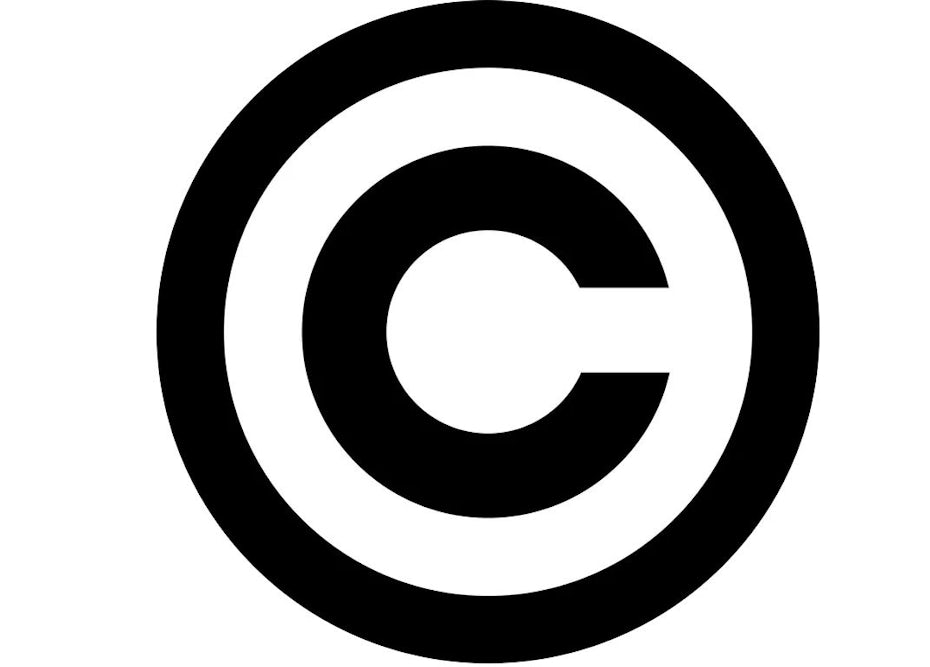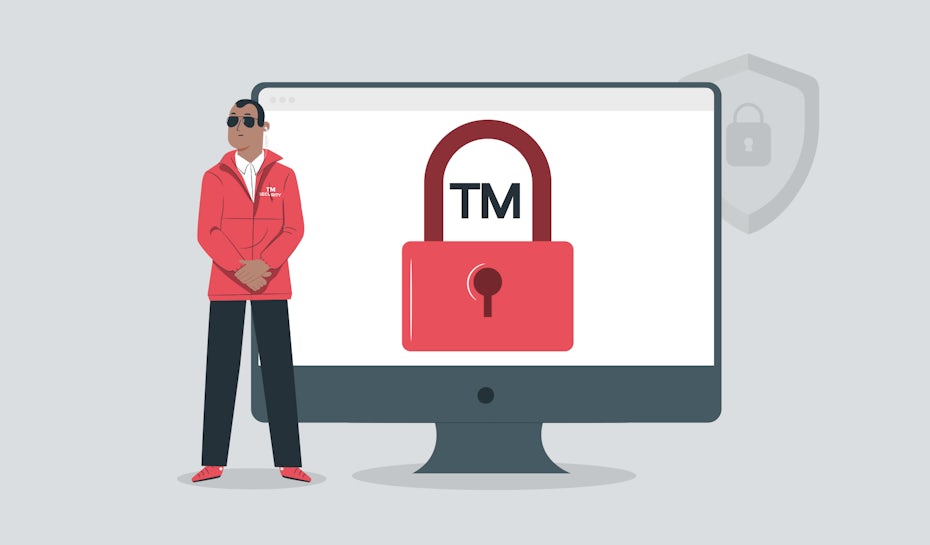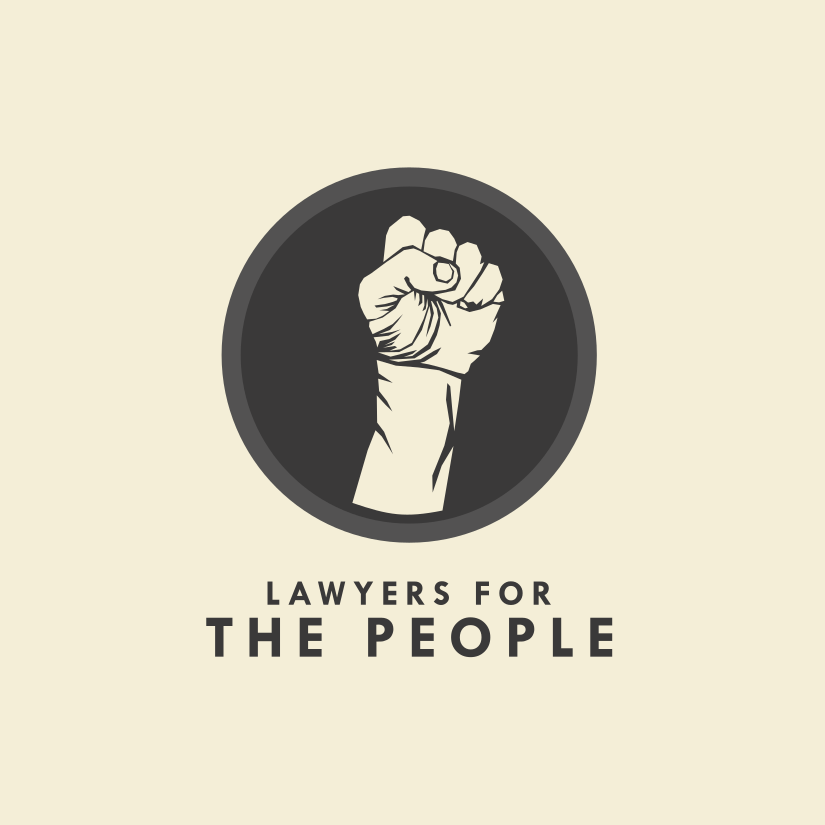How To Register Logo For Company
You know those little superscript symbols next to brand names and logos—™ and ®? They're the trademark and registered trademark symbols, respectively. And if you have a logo or you're in the process of creating a logo, understanding these tips for trademarking a logo can save you time, money and headaches as you grow your brand.
By simply having a logo, you have what's known as a common law trademark for your logo. That means that, without doing anything paperwork-wise, you have the sole legal right to use and amend that logo as you see fit. But without an officially registered trademark, that right isn't as secure as it could be. Here we answer the top questions about trademarking a logo.
- Trademark basics
- The process of trademarking a logo
- Owning and protecting trademarks
Trademark basics
—
What is a trademark?
A trademark is a legal designation that protects a piece of intellectual property from infringement.

Let's break that down.
Intellectual property is any type of original creation. Almost anything can be a piece of intellectual property: a drawing, a song, an innovation, a unique process, a novel, a movie, an invention, the code you've developed, a recipe and in some circumstances, an application of a scientific discovery.
If you create something, it's your intellectual property. You have near-total control over your intellectual property, which means you get to decide if and when to sell it, who you license its use to and the circumstances under which the license is granted, so what licensing entails and what it costs the licensee. You also control how it can be added onto, like in the form of a sequel.
When somebody else uses your intellectual property without your consent, it's known as infringement. However, there are a few circumstances under which another party may use your intellectual property without your consent—in the US, these are covered by the Fair Use Doctrine.
Outside these circumstances, infringement is illegal and as the owner of the intellectual property, you have the right to take legal action against anybody infringing on your intellectual property. Intellectual property infringement is something every designer should have at least a basic understanding of.

How is a trademark different from a copyright?
A copyright does the same thing as a trademark. The difference between them is the specific types of intellectual property they protect:
- A copyright protects artistic endeavors like novels, works of visual art, short stories, characters' names and fictional worlds, songs, code and other types of creations that don't explicitly exist for commercial purposes
- A trademark protects intellectual property that does exist for explicitly commercial purposes, like brand names, logos, taglines and slogans
What does a trademark protect?
A trademark solidifies your ownership of your intellectual property. By simply creating and using a logo, you automatically have the sole right to use it and take legal action against infringement. But by registering your trademark, that right is strengthened and you gain additional legal protections.
In the United States for example, trademarks are registered with the United States Patent and Trademark Office (USPTO). Other countries have similar agencies and offer similar trademark protection through them.

Registering a trademark with the USPTO grants you the following rights and protections:
- The right to take legal action against alleged infringement of the trademark in federal court.
- The public is notified of your trademark registration.
- You are legally presumed to own the trademark and hold exclusive rights to use it in relation to the goods and/or services listed in your registration.
- It paves the way for you to register your trademark in other countries more easily.
- You may prevent the importation of foreign goods that infringe on your trademark.

What can't it protect?
A trademark can't grant you the exclusive right to anything generic. For example, you can't name your business "Juicy Oranges" and expect to trademark the name and a logo featuring the name.
A trademark also can't prohibit others from using your intellectual property in ways compliant with the Fair Use Doctrine. Generally, Fair Use allows others to use trademarked and copyrighted work in ways that won't lead to consumer confusion.
We cover these in greater detail in our blog post on the things every designer should know about intellectual property and trademark infringement.
Is a trademark enforceable around the world?
No. Trademarking your logo only grants you trademark protection in the country where you filed for the trademark. Although trademarking your logo in one country can make it easier to trademark it in another, you need to file for a separate trademark in every country where you want that legal protection.
Who owns a logo trademark?
When you design your own logo, you do. When you commission a designer to create a logo for you, the trademark is transferred to you once you purchase it from them. Usually there's a Transfer Agreement that both parties sign.
As the trademark owner, you decide where the logo appears, how the logo is updated or amended and which parties may license it for use in their own materials.
The process of trademarking a logo
—
Can I trademark my own name?
Yes. However, it needs to be for a business-related purpose.

Let's say your name is Sarah Keller and you create custom resin earrings. You can absolutely trademark a business name like Sarah Keller Jewelry or Earrings by Sarah.
But in this instance, trademarking your name only protects your intellectual property in the business category you're working in. If there's another Sarah Keller out there and she decides to trademark her photography business' name, Sarah Keller Photography, she can absolutely do that without worrying about infringing on your copyright.
Think carefully about trademarking your name as your brand name and making it part of your logo. Though it's an easy way to create a unique mark, you're also giving your name to something that exists separate from you—and even if you leave the company years in the future, that brand will still be operating under your name.
This is what happened to UK fashion designer Karen Millen. After playing a key role in building her retail company to the global brand it is today, she exited in 2004. But because the business is registered in the UK as Karen Millen, she cannot legally register a new trademark in the UK with a substantially similar name. Additionally, a court ruled in 2016 she also cannot use her name to brand clothing and household goods in the US and China, as this violates the terms of her 2004 agreement.
Does my logo qualify for trademark protection?
If it's strong enough, it will. If it's not strong enough, the USPTO (or your country's trademark office) will reject it.
What constitutes a strong logo?
In the world of intellectual property, a strong logo or name is one that is unmistakably unique to its creator.

These include made-up names like Microsoft and Google as well as words and symbols not typically associated with the product or service they're attached to, like Apple computers or White Castle hamburgers.
In contrast, a weak logo or name is one that's generic (like an icon or emoji for example) or simply describes the product or service. A few hypothetical examples of these include Delicious Ice Cream, Trustworthy Law Firm and Gray Brick Daycare Center.
How long does it take to trademark a logo?
Usually, trademarking a logo takes between six and nine months from filing to issuance. However, it can take up to three years for complex cases.
What does it cost to trademark a logo?
The cost of trademarking a logo varies by country. In the US, trademarking a logo with the USPTO costs between $275 and $660 plus legal fees. Trademarking a logo with a state trademark office (which offers similar protection to registering it at the federal level, but only within a specific state) generally costs between $50 and $150.
What does the process of trademarking a logo involve?
Before you apply for trademark registration, conduct a search of your country's and state's databases to determine if another company is already using a logo that's too close to the one you want to use. Searching the internet can help at this stage too because it can catch common law logos you otherwise wouldn't catch. Make sure you really research all the names and images you're considering, because if your logo is too similar to an existing brand's, your application will be rejected and you'll have to essentially restart the process.
Once you've determined your logo isn't too similar to another brand's, you can go ahead and file a trademark application with your country's trademark office, for example the USPTO in the US. It then goes into USPTO review.
At this stage, one of two things can happen. The trademark office can either determine your logo is qualified to trademark the way it is and issue it for publication (which leads to registration) or they could find one or more issues with it and take office action. When this happens, you are notified of why the logo was rejected and given six months to respond. At this stage, if all issues are corrected, the trademark office may approve the logo and publish it. Or, if the issues are not fully resolved, they may take office action again, and you again have six months to respond.
After a second office action, the logo may be published or rejected, depending on whether it meets the trademark office's criteria for trademarking a logo.
Do I need to work with a lawyer to trademark my logo?

No. You can absolutely DIY the process of trademarking your logo.
But working with a lawyer can be beneficial. An experienced intellectual property lawyer can file your trademark application for you and handle all the paperwork on your behalf. By having them do this, you can save yourself time, energy and the risk of potentially messing up—since your lawyer's done this lots of times before, they can make it as smooth and easy as possible.
What if my trademark application is rejected?
There are a number of reasons why your trademark application might be rejected. These include:
- It's a generic logo.
- There's a high likelihood consumers will confuse your logo with an existing trademarked logo.
- Your logo is merely ornamentation, rather than a legitimate identifying mark.
- Your logo contains offensive verbiage or imagery (though there are exceptions where this type of material can be trademarked).
- The logo's imagery or text is geographically misdescriptive, which means it inaccurately implies your company or product is based in or sourced from a specific location.
If you feel the rejection was in error, you can file an appeal with the trademark office to have the application reviewed again and ideally, accepted. If it turns out your logo doesn't qualify for trademarking, you'll need to go back to the drawing board and create a new logo before trying again.
Owning and protecting trademarks
—
What are the strongest trademarks? (and why?)
As we mentioned above, the strongest trademarks are ones that are undeniably unique to their brands. This can be because they're:
- Made-up words or images.
- Arbitrary in relation to their product or service (think Apple computers).
When you don't have a registered trademark, asserting your ownership of your brand name or logo can be more difficult if you have a weak trademark.
Why wouldn't I want to trademark my logo?
When you first create your logo, the next thing you need to do is trademark it, right?
Not necessarily.
The trademarking process can be fairly lengthy and expensive, so you don't want to be having to do it repeatedly. This means there are a few circumstances under which it's not advisable to trademark your logo… at least not right away. These circumstances include the following three points:
1. Things aren't set in stone
You're not totally committed to the logo yet—or you know you'll be changing it within a short period of time. This could be because you made a quickie low-effort logo with a logo maker just to have something in place when your business launched and you plan on getting a professional logo created at a later date when you've got some more money to spend.
Maybe you plan on expanding in the coming years and changing your logo to reflect that. In any case, a logo has to be consistently in use to be protected by its trademark, so if your logo is just a "for now" logo, it's not worth the time or money to trademark it.
2. It's not unique
If your logo is fairly similar to another logo in use in your country, tread carefully. It could be similar to a big, national brand, meaning there's a chance people will get confused, change your logo. It's not worth the confusion, looking like a copycat or potentially running into legal trouble with the other brand.
But let's say that other company is based in Oregon, and you're in New Jersey, and you're both small businesses that primarily serve your local markets. In that case, you probably won't run into the issue of people confusing you for the other company… but you still can't register your logo with the USPTO. In this case, registering your trademark with your state should provide enough protection.
3. Your business could be temporary
What about if you aren't sure your business will last? Hey, it's a valid concern. Maybe it's just a side hustle for you and you're not convinced you'll want to do it forever. Or it's just a stopgap between full time positions. Just like it doesn't make sense to register a logo that's going to change in the near future, it's most likely not worth it to register a logo for a business you're not sure will last.
How do I use those trademark symbols?
There's two components to this question: when is the appropriate time to use each symbol, and how do you literally insert it into your text.
™ is used for trademarks that aren't registered with the trademark office. This includes trademarks that are currently pending. ® is for trademarks that are registered with the trademark office.
And here's how you insert the symbols into text:
- When typing on a Windows computer, make sure the [Num Lock] key is engaged, then use the keyboard combination of pressing the [Alt] key followed by the keypad number sequence of "0153" to insert the TM symbol or "0174" to insert the registered trademark symbol.
- On Apple operating systems, hold the [Option] and "2" keys for the trademark sign, and hold [Option] and "R" at the same time to produce the registered trademark symbol.
- Insert either symbol by selecting it from the character map available in your software program.
What can I do if I find my trademark being violated?
Lawyer up. Depending on the specifics of the situation, you could potentially be entitled to recover damages for the infringement. Although working with a lawyer can be expensive, it doesn't necessarily have to be. You can work with a pro bono lawyer or a lawyer providing low-cost services to inventors and startup businesses, as discussed in this post by the USPTO.

Usually, the first step in resolving an incident of trademark infringement is issuing a cease and desist letter. This is a letter from your lawyer to the party infringing on your trademark asking them to stop.
If this doesn't get them to stop, you might need to file a lawsuit to have the court order them to stop. This doesn't necessarily mean the court will rule in your favor—if the court deems your similar logos are not causing confusion, it may rule you're both permitted to use the logo. This is what happened when Apple Corps and Apple, Inc went to court in 2006 over their similar names.
But how do you know if your trademark is being infringed? Read our article on how to check if your design has been copied, where we explain the tools and strategies you can use to find out if your trademarked design is being used without your consent.
Trademarking a logo protects your unique brand
—
As a growing brand, it's in your best interest to be proactive about trademarking your unique brand assets. But before you can file for a trademark, you need to have a unique logo to trademark! A unique logo is more likely to be approved than a generic one, so if you don't already have one, work with an experienced logo designer to create the perfect logo for your brand.
Want to get the perfect logo for your business?
Work with our talented designers to make it happen.
This article was originally written by Melissa Jenkins and published in 2016. It has been updated with new examples and information.
How To Register Logo For Company
Source: https://99designs.com/blog/logo-branding/trademarking-a-logo/
Posted by: johnsonawasuard.blogspot.com

0 Response to "How To Register Logo For Company"
Post a Comment